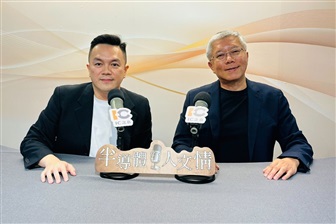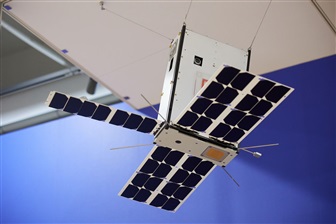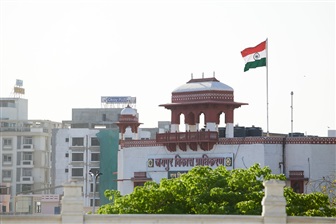Around the web
Displaying links tagged Semiconductors [back to index]
12 Nov 200811 Nov 200810 Nov 20087 Nov 20085 Nov 20084 Nov 20083 Nov 200831 Oct 200830 Oct 200829 Oct 200828 Oct 200827 Oct 2008
Qualcomm’s fiscal fourth quarter results were boosted by payments from its recent deal with Nokia, but it was cautious about 2009, highlighting the pressure on the CDMA market and on handsets in general.
Rethink Wireless
Leading vendors are diversifying their product lines, driving down operating costs and improving production efficiencies to mitigate ongoing problems in the mainstream DRAM industry. Manufacturers are putting renewed priority on developing more power-efficient parts. Meanwhile, DRAM manufacturers continue to push the process envelope to higher densities.
EE Times
PRAM, known as perfect RAM, is the next-generation memory chip which features the advantages of NAND and NOR flash memories. Samsung will begin mass production of 65-nano 512MB PRAM in the first half of 2009 for the first time in the world.
ETNews.com
For flat-panel makers, control over the supply of LED die appears to be a key strategic decision. But for a foundry company like TSMC, that argument is irrelevant. Any market entry for TSMC would only make sense if demand for LEDs with specific wavelengths and emission characteristics becomes huge. This could ultimately be the case in general lighting, where three or four individual chips might go into every solid-state lighting "bulb" for future domestic applications.
Compound Semiconductor
THine Electronics and Winbond Electronics has announced that the two companies agreed to transfer Winbond's Image Signal Processor (ISP) Business to THine. Winbond's ISP products are specially designed for high-end camera and mobile phones. Winbond will transfer assets including its intellectual property rights and ISP-related assets in fiscal year 2008, establishing a new company to transfer to THine.
Company release
This option enables Motorola, within a specified time period, to enter into a pre-negotiated license agreement with Tessera and settle all outstanding litigation between the companies. If Motorola exercises the option and takes the license, it will pay royalties on all its products that include chips that use Tessera's technology and are sourced from companies who are not Tessera licensees. Detailed terms of the agreements including the time period, option fees, license fees and license royalties are confidential.
Company release
Taiwan announced measures to loosen loan and payment conditions on Monday to help the island's loss-making DRAM memory chip makers. Three major DRAM makers in Taiwan -- Powerchip, Nanya Technology and ProMOS -- are struggling with falling chip prices caused by oversupply. They have been in the red in the past several quarters.
Reuters
SanDisk has been hurt by falling prices for NAND memory chips, a type of flash memory the company makes for consumer gadgets like music players and digital cameras. But a Goldman Sachs analyst said key intellectual property rights associated with the chips give the SanDisk more value than the market has recognized.
CNNMoney
Swiss chip maker STMicroelectronics has begun laying off workers at its Phoenix factory after a hoped-for sale of the plant never materialized. Spokesman Mike Michael Markowitz said about 100 of the plant's 850 workers were let go this week and that the process would continue. The company announced plans to close the 25-year-old plant last year and move those jobs to lower-cost facilities overseas.
azcentral.com
Backed by a strong investor, Advanced Micro Devices is expected to expand its production lines and next foundry service providers such as Fab 36 and Fab 38 in Dresden, Germany. During a congress in Munich, Udo Nothelfer, VP, manufacturing and technology, for AMD's Fab 36, gave details on the company's strategy and road map. "AMD's expansion plans are based on the presumption that the trend in the IC industry toward fab-lite and fabless business models will create added demand for foundry services," said Nothelfer.
EETimes Asia
IBM has also bolstered parts of the shaky SOI supply-chain to propel its initial SOI foundry service in the market. But some wonder if the technology will gain traction amid the current IC slowdown and economic crisis. To fuel a new class of SOI designs, IBM will provide a 45-nm foundry service within its own fabs. As part of the plan, Singapore's Chartered Semiconductor Manufacturing will act as a "second source" foundry for IBM's 45-nm SOI offering. And ARM Holdings announced a physical IP library offering for IBM's SOI technology.
EE Times
6 Nov 2008
SanDisk has released details of its new flash management technology, ExtremeFFS (Extreme Flash File System) which has the potential to extend endurance and accelerate SSD random write speeds by as much as 100 times compared with existing systems.
Company release
A new nanocoating developed by Rensselaer Polytechnic Institute gives most run-of-the-mill solar panels the ability to capture 96.2% of the sun's rays from any angle.
Gizmodo
...Yeung said that "given the dramatic declines in chip stocks in the past 12 months, and in light of our analysis in this report, we believe the risk/reward has now become favorable to be long selective chip names...
Marketwatch.com (Dow Jones)
The Korea Times
Company release
The Financial Times
Company release
Hynix Semiconductor, the world's second biggest chipmaker behind Samsung Electronics, said it expects prices of computer memory chips to decline by about 30% in 2009, and prices of NAND flash memory chips to fall 40% further from this year. "The slowdown in both personal computer and motherboard sales will weaken the demand for DRAMs, which will hurt prices," a Hynix executive told The Korea Times, Wednesday.
The Korea Times
oshiba, the largest Japanese chip maker, reported a quarterly loss Wednesday as the global economic slowdown aggravated a glut in the market for chips used to store data in consumer electronics, helping drive down memory prices. The net loss was ¥26.8 billion, or about US$275 million, in the three months that ended September 30, compared with a ¥25 billion profit a year earlier, the Tokyo-based company said. Sales fell 7%to ¥1.88 trillion.
International Herald Tribune
Rethink Wireless
...Huang said that much of Global's work these days goes into gathering and validating IP-based platforms: libraries of functions, often in hard-macro form, that are necessary for a particular application space. If the functional IP is on the shelf, verified, outfitted for power management, are DfM-friendly, then creating a specific chip for a customer becomes mainly a matter of IP assembly rather than a physical design effort...
EDN.com
Toshiba said at a symposium that its 40nm and 45nm process technologies are ready and that the company has moved into "pilot line" production for those fabrication processors. However, Toshiba's main customer, Sony Computer Entertainment, has not yet designed 40nm or 45nm versions of its chips that are used inside Sony PlayStation 3 video game system.
x-bit Labs
Business Week
232/506 pages








